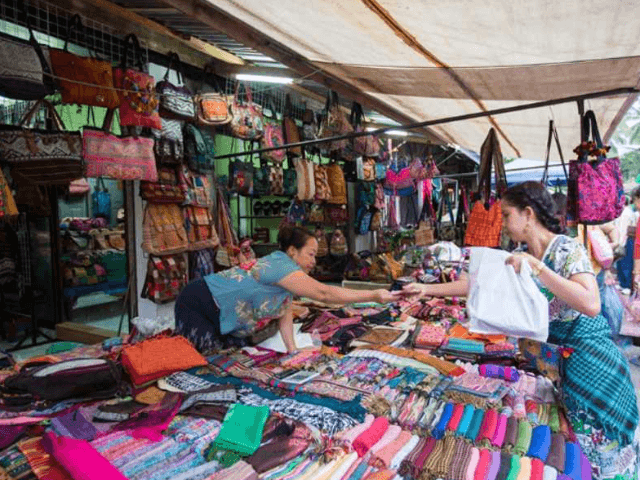Discover the tranquil beauty of Nam Ngum Lake in Laos, just hours from Vientiane, where scenic boat cruises, floating villages, and untouched nature create the perfect escape from the city. Ideal for nature lovers, photographers, and peace seekers, this hidden gem offers authentic culture and serene landscapes year-round.
TABLE OF CONTENTS
1
Why Visit Nam Ngum Lake on Your Laos Adventure?
A Hidden Gem Just Hours from Vientiane
Laos’ Largest Lake and a Tranquil Escape
Ideal for Nature Lovers, Photographers, and Peace Seekers
2
Where Is Nam Ngum Lake Located?
Map Overview and Access from Vientiane
Nearby Attractions: Vang Vieng, Thalat Town, and Hin Heup
3
Top Things to Do at Nam Ngum Lake
Take a Scenic Boat Cruise on the Lake
Visit Fishermen’s Floating Villages and Local Markets
Enjoy Fresh Seafood by the Water’s Edge
Kayaking, Jet-Skiing, and Relaxing on the Shore
Explore the Nam Ngum Dam and Hydropower Plant Tour
4
Cultural and Historical Insights
The Role of Nam Ngum in Laos’ Economic and Cultural Identity
Local Ethnic Communities and Traditions Around the Lake
Folktales and the Spiritual Connection with the Water
5
Best Time to Visit Nam Ngum Lake
Dry Season (Nov–April) vs. Green Season (May–Oct)
When to Visit for Sunset Cruises and Clear Views
6
Where to Stay Near Nam Ngum Lake
Floating Guesthouses, Lakeside Resorts, and Eco-Lodges
Budget vs. Boutique Options for Travelers
7
How to Get to Nam Ngum Lake
Private Car, Minibus, or Local Bus from Vientiane
Tips for Booking Tours or Renting a Motorbike
8
Travel Tips for a Smooth Trip
What to Pack for a Day or Overnight Stay
Safety, Weather, and Local Etiquette
Responsible Tourism and Supporting Local Communities
9
Final Thoughts: Is Nam Ngum Lake Worth the Journey?
A Peaceful Contrast to Laos’ More Touristy Spots
Ideal for a Nature Retreat or Short Getaway from Vientiane
Why Visit Nam Ngum Lake on Your Laos Adventure?
A Hidden Gem Just Hours from Vientiane
Tucked away just 90 kilometers north of the capital city, Nam Ngum Lake offers a refreshing change of pace from the bustle of Vientiane. Often overlooked by mainstream tourists, this lake is a favorite among local travelers and in-the-know visitors seeking peaceful scenery, fresh air, and an authentic experience. The drive itself-winding past rural villages, temples, and mountain views-sets the tone for the calm that awaits.
Whether you’re after a laid-back day trip or a relaxing overnight escape, Nam Ngum delivers with its blend of scenic beauty, gentle pace, and lakeside charm.

Laos’ Largest Lake and a Tranquil Escape
Nam Ngum is the largest body of water in Laos, formed by a dam on the Nam Ngum River. Its vast, glassy surface is surrounded by rolling green hills, small islands, and traditional fishing villages that feel almost frozen in time.
Unlike some more developed destinations, Nam Ngum retains a quiet, off-the-grid atmosphere. You won’t find crowds or commercial noise here- just the sound of water lapping gently at the shore, birdsong, and the occasional hum of a passing boat.
It’s an ideal place to unwind, explore nature, or enjoy a sunset over the water with a cold drink in hand. For those looking to get off the beaten track without going too far, Nam Ngum Lake offers one of Laos’ best-kept secrets.

Ideal for Nature Lovers, Photographers, and Peace Seekers
Nam Ngum Lake is tailor-made for those who crave a deeper connection with nature. Whether you're an avid birder, a landscape photographer chasing golden-hour light, or simply a traveler seeking stillness, this serene expanse delivers on all fronts.
Mornings bring mist rising from the water’s surface, afternoons glow with soft reflections of sky and forest, and sunsets cast long shadows across the hills. The lake’s peaceful rhythm invites visitors to slow down and just be - no noise, no rush, just the calm beauty of Laos in its purest form.
Photographers will find endless inspiration in the lake’s shifting moods and colors, from the vibrant blues of midday to the golden hues of dusk. Meanwhile, nature lovers can explore quiet coves, spot kingfishers or water buffalo, and breathe in clean air untouched by mass tourism.
Whether you're kayaking on mirror-still waters, sipping Lao coffee on a floating bungalow, or quietly journaling by the shore, Nam Ngum promises the kind of deep peace that lingers long after the trip ends.
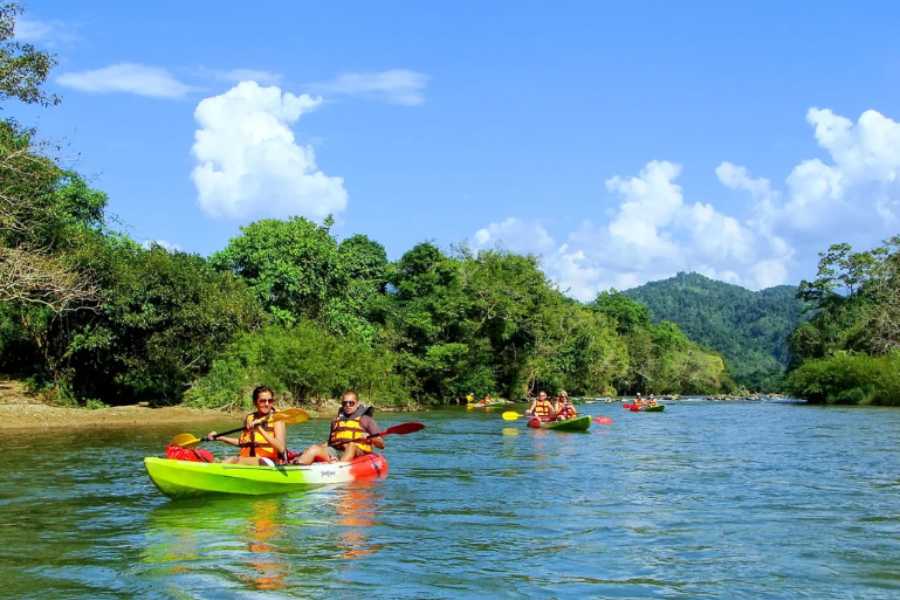
Where Is Nam Ngum Lake Located?
Map Overview and Access from Vientiane
Nam Ngum Lake lies in central Laos, just about 90 km (56 miles) north of Vientiane, making it an easy day trip or overnight getaway from the capital. The lake spans parts of Vientiane Province and Bolikhamxay Province, with its main access point near Thalat Town.
From Vientiane, the journey typically takes around 2–2.5 hours by car or minivan. The road (Route 10) is well-paved and scenic, passing through rural villages, rice fields, and low hills. Local buses and private tours can also be arranged from the capital or nearby Vang Vieng.
GPS coordinates: approximately 18.4°N, 102.5°E. For independent travelers, it’s helpful to download offline maps or use apps like Maps.me or Google Maps in advance, as coverage can be spotty near the lake.
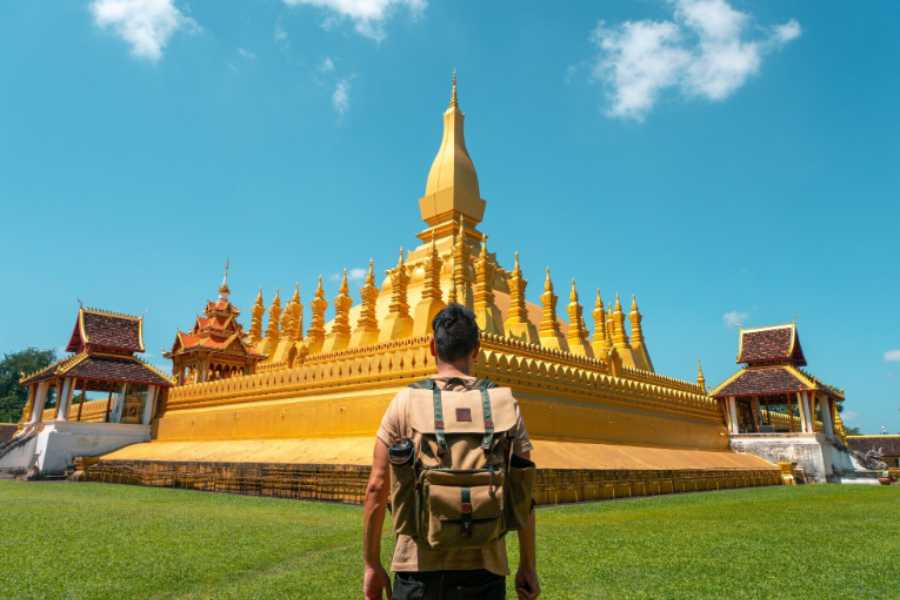
Nearby Attractions: Vang Vieng, Thalat Town, and Hin Heup
Thalat Town: The small lakeside town of Thalat serves as the main hub for Nam Ngum tourism. It has simple guesthouses, boat rental services, and a few local eateries offering fresh lake fish and Lao-style meals.

Vang Vieng: Just 1.5 hours north of Nam Ngum Lake, Vang Vieng is famous for its dramatic karst mountains and river adventures. Many travelers choose to stop at the lake en route to or from Vang Vieng.
.jpg)
Hin Heup: A lesser-known spot along the journey from Vientiane, Hin Heup offers a glimpse into rural Lao life, with traditional markets and a scenic bridge over the Nam Lik River. It's a peaceful rest stop that showcases local color and hospitality.
Nam Ngum’s location makes it a strategic and refreshing pause between popular destinations - quieter than Vang Vieng, more natural than Vientiane, and full of local charm.
Top Things to Do at Nam Ngum Lake
Take a Scenic Boat Cruise on the Lake
One of the most relaxing and memorable ways to experience Nam Ngum Lake is by taking a boat cruise. These cruises allow you to drift across the expansive waters, weaving between the lake’s many small islands. The scenery is especially stunning at sunrise or sunset, when the light casts golden reflections on the surface and the mountains are mirrored in the still water. Some tours even stop by floating fish farms or lakeside villages, offering a glimpse into local life on the water.

Visit Fishermen’s Floating Villages and Local Markets
Scattered throughout the lake are small floating communities where local fishermen live and work. These villages offer an authentic window into a lifestyle that’s closely tied to the lake. Visiting them with a local guide ensures respectful interaction and deeper understanding. You can also explore nearby land-based markets, especially in Thalat Town, where vendors sell everything from fresh fish to handmade snacks and local produce. It’s a great way to sample everyday Lao flavors and meet residents in a casual setting.

Enjoy Fresh Seafood by the Water’s Edge
Dining at Nam Ngum Lake is a treat for anyone who enjoys fresh, locally caught fish. Many restaurants and family-run eateries line the lake’s edge, serving grilled tilapia, fish soup, and other regional dishes. Most meals are accompanied by sticky rice and traditional Lao dips like spicy jeow. Some restaurants even have floating platforms where you can enjoy your meal right above the water, with a breeze and panoramic views all around.
Kayaking, Jet-Skiing, and Relaxing on the Shore
For those who like a bit of adventure, Nam Ngum Lake offers activities like kayaking and jet-skiing. Rentals are available through some eco-lodges and lakeside resorts. Kayaking is ideal for a peaceful paddle along the coves and islands, while jet-skiing offers a thrill for adrenaline seekers. Alternatively, if you’re looking to unwind, the lake's peaceful shores are perfect for a picnic or a lazy afternoon under the trees, far from any crowds.

Explore the Nam Ngum Dam and Hydropower Plant Tour
The Nam Ngum Dam is not only a key landmark in the area but also a major contributor to Laos’ hydroelectric power supply. Built in the 1970s, it marked a turning point in the country’s energy development. While official tours are not always advertised, some local guides or guesthouses can help arrange visits or explain the history of the site. Even without entering the dam itself, the surrounding viewpoint offers sweeping vistas of the lake, especially at dawn or dusk.

Cultural and Historical Insights
The Role of Nam Ngum in Laos’ Economic and Cultural Identity
Nam Ngum Lake isn’t just a scenic destination- it plays a crucial role in shaping the identity of modern Laos. The Nam Ngum Dam, constructed in the 1970s, was the country’s first major hydropower project and has since become a vital source of electricity for both domestic use and export, particularly to Thailand. This has significantly contributed to the nation’s economic development. Beyond its industrial value, the lake also supports the livelihoods of countless fishing families, farmers, and tour operators, making it a living example of how nature and local economies are deeply intertwined in Laos.

Local Ethnic Communities and Traditions Around the Lake
The areas surrounding Nam Ngum Lake are home to several ethnic groups, including the Lao Loum, Hmong, and Khmu. Each community brings its own language, customs, and agricultural practices to the region, contributing to the cultural richness of the area. In small villages near the lake, you may encounter traditional stilt houses, hear folk music played during community festivals, or see handwoven textiles drying in the sun. These cultures are best appreciated through respectful visits, homestays, or by joining community-led tours that explain the significance of their customs.
Folktales and the Spiritual Connection with the Water
Like many natural places in Laos, Nam Ngum Lake holds spiritual meaning in local folklore. It’s believed that the lake, its waters, and even some of the islands are inhabited by spirits-known locally as “phi”- that protect the land and its people. Locals may leave offerings of flowers or food near the shore or hold ceremonies during special festivals to honor these unseen guardians. These traditions reflect the deep respect Lao people have for nature, seeing it not just as a resource but as something sacred. Listening to these folktales from village elders adds a mystical layer to your visit, helping you understand how closely Lao identity is tied to the land and water.
Best Time to Visit Nam Ngum Lake
Dry Season (Nov–April) vs. Green Season (May–Oct)
Nam Ngum Lake can be visited year-round, but each season offers a distinct experience. The dry season, from November to April, is generally the most popular time for travelers. Skies are clear, temperatures are pleasant, and water levels are steady - perfect for boat trips, photography, and outdoor dining by the lakeside. This season also aligns with several Lao festivals, adding cultural flair to your visit.
In contrast, the green season from May to October brings lush scenery, vibrant rice paddies, and dramatic cloudscapes. Although you may encounter brief downpours, the rain refreshes the landscape and brings out the region’s natural beauty. Fewer tourists also mean a more peaceful and intimate experience, especially if you enjoy traveling off the beaten path.

When to Visit for Sunset Cruises and Clear Views
If you're hoping to catch Nam Ngum at its most picturesque, plan your visit in the early dry season - particularly from late November through January. During these months, the air is crisp and clear, offering stunning visibility across the lake and distant hills. Sunset cruises are especially magical at this time, with golden light reflecting off the calm water and silhouetting the floating villages. For photographers or couples seeking a romantic moment, late afternoons on a boat are an ideal choice.
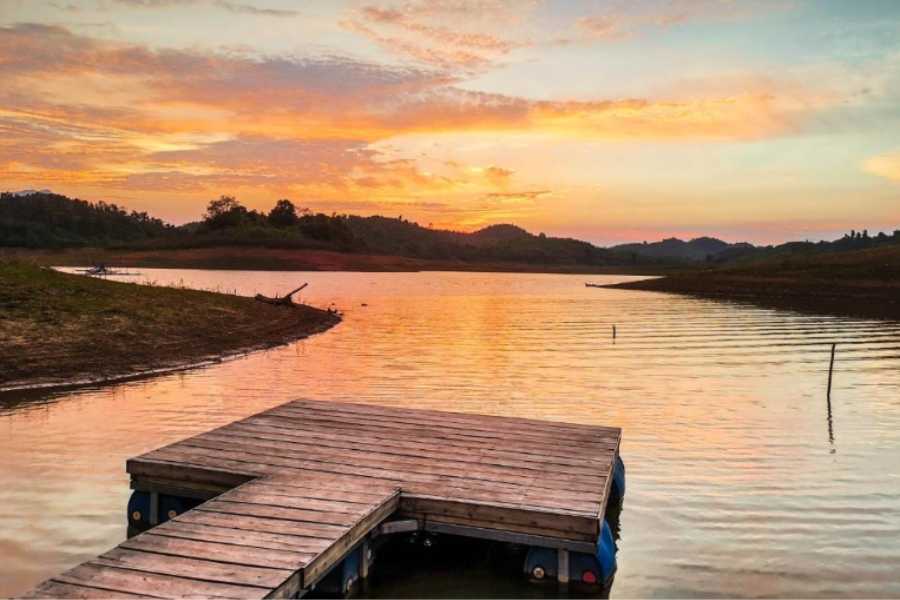
Where to Stay Near Nam Ngum Lake
Floating Guesthouses, Lakeside Resorts, and Eco-Lodges
Accommodation options near Nam Ngum Lake offer a unique chance to connect with nature and local culture. Floating guest houses provide an unforgettable experience, allowing guests to stay right on the water surrounded by tranquil views and gentle lake breezes. These simple but comfortable lodgings often come with basic amenities and fresh local meals.
For those seeking more comfort, lakeside resorts combine natural beauty with modern conveniences. Many feature swimming pools, restaurants, and organized tours. Eco-lodges emphasize sustainability and often support local communities, offering guests an immersive stay that respects the environment.
Budget vs. Boutique Options for Travelers
Travelers on a budget will find affordable guesthouses and homestays in nearby towns like Thalat and villages around the lake. These options provide authentic local experiences with friendly hosts and home-cooked meals, perfect for those wanting to explore the area without breaking the bank.
Boutique accommodations tend to be pricier but offer luxury, privacy, and premium services, including spa treatments and curated excursions. Whether you prefer rustic charm or upscale comfort, Nam Ngum Lake has lodging options to fit a range of tastes and budgets.
How to Get to Nam Ngum Lake
Private Car, Minibus, or Local Bus from Vientiane
Getting to Nam Ngum Lake from Vientiane is straightforward, with several transportation options depending on your preferences and budget. Private cars offer the most comfort and flexibility, allowing you to stop along the way or tailor your schedule. Many travelers hire private drivers or taxis for a day trip or overnight stay.
Minibuses run regularly from Vientiane’s bus stations, providing an affordable and convenient option. These shared rides usually depart in the morning and take about two hours, following the main road north toward the lake. Local buses also operate on this route but may be slower and less frequent, suitable for more adventurous travelers.
Tips for Booking Tours or Renting a Motorbike
Tours to Nam Ngum Lake often include transportation, guided activities, and meals, making them a hassle-free choice for first-time visitors. Booking through reputable agencies or your hotel in Vientiane ensures reliability and safety.
For those who prefer exploring independently, renting a motorbike offers freedom to discover hidden spots around the lake at your own pace. The roads are generally in good condition, but be prepared for occasional rural stretches and watch for local traffic. Always wear a helmet and carry necessary documents. Early morning departures are recommended to avoid midday heat and enjoy calmer lake conditions.
Travel Tips for a Smooth Trip
What to Pack for a Day or Overnight Stay
Packing smartly can transform your Nam Ngum Lake experience from good to unforgettable. For a day trip, bring lightweight, breathable clothes to stay comfortable under the warm sun, along with a hat and sunglasses for extra protection. Comfortable walking shoes or sandals are a must if you plan to explore nearby villages or trails. Don’t forget a reusable water bottle to stay hydrated, plus some snacks-since options can be limited in remote areas.
If you’re staying overnight, pack a light jacket or sweater to keep warm as temperatures drop in the evening. Insect repellent is essential to protect against mosquitoes, especially at dusk near the water. Quick-dry swimwear and a towel will come in handy if you want to enjoy boating or water activities. A power bank or portable charger is also recommended to keep your devices charged throughout your adventures.
Let Threeland Travel help you prepare the perfect packing list and guide you on what to bring, ensuring you have everything you need for a smooth, stress-free trip.
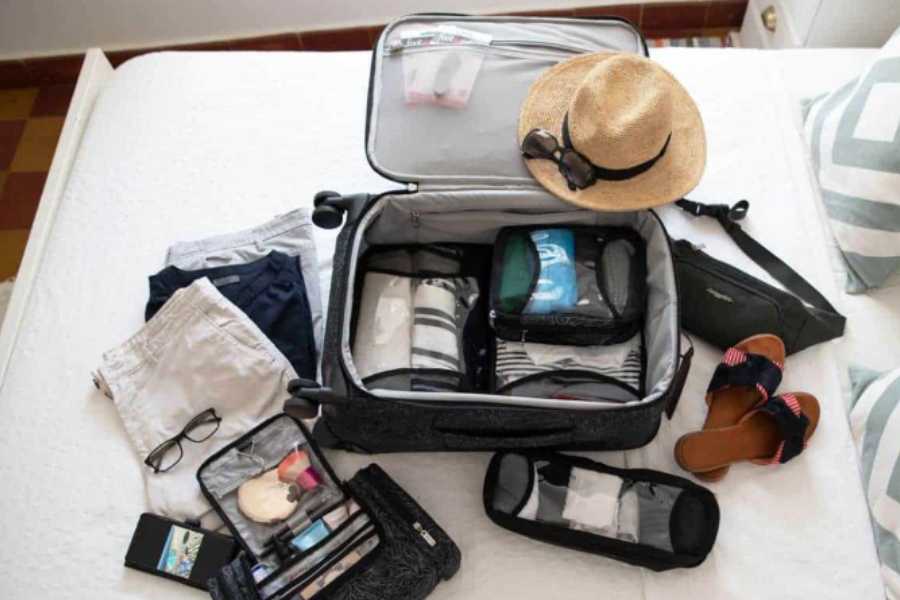
Safety, Weather, and Local Etiquette
Your safety is a priority when exploring Nam Ngum Lake and these travel tips for Laos will ensure a comfortable and respectful journey.. While the weather is mostly warm and pleasant, sudden showers are common during the green season (May to October), so packing a lightweight raincoat or poncho is wise. Always follow safety guidelines during water activities and use life jackets when provided.
Respecting local customs will enrich your visit. Dress modestly when entering villages or religious sites, and approach locals politely. Always ask before taking photos of people or their homes. Embrace the gentle, patient pace of life in Laos- it will help you connect more deeply with the culture. Remember to keep the environment clean by avoiding littering and helping preserve the stunning natural surroundings.
With Threeland Travel, you’ll receive expert tips on staying safe and respectful, so you can fully enjoy the authentic Nam Ngum experience.
Responsible Tourism and Supporting Local Communities
Traveling responsibly around Nam Ngum Lake makes a real difference for the local communities. Choose family-run guesthouses or eco-lodges that focus on sustainability and fair treatment of staff. Enjoy meals at local eateries and purchase handicrafts directly from artisans, ensuring your travel dollars support the people who live here.
Minimize plastic use, stick to designated paths, and respect local traditions to protect this beautiful region for generations to come. Meaningful interactions with ethnic communities not only deepen your experience but also help maintain their rich cultural heritage.
Threeland Travel is committed to responsible tourism. When you book your trip with them, you’re supporting ethical travel practices that benefit both visitors and locals alike. When you book your trip with them, you’re supporting ethical travel practices that benefit both visitors and locals alike. They also offer curated Laos Travel Packages designed to showcase authentic experiences while supporting the community. Their knowledgeable guides help you engage with the culture respectfully while making your journey smooth and unforgettable.
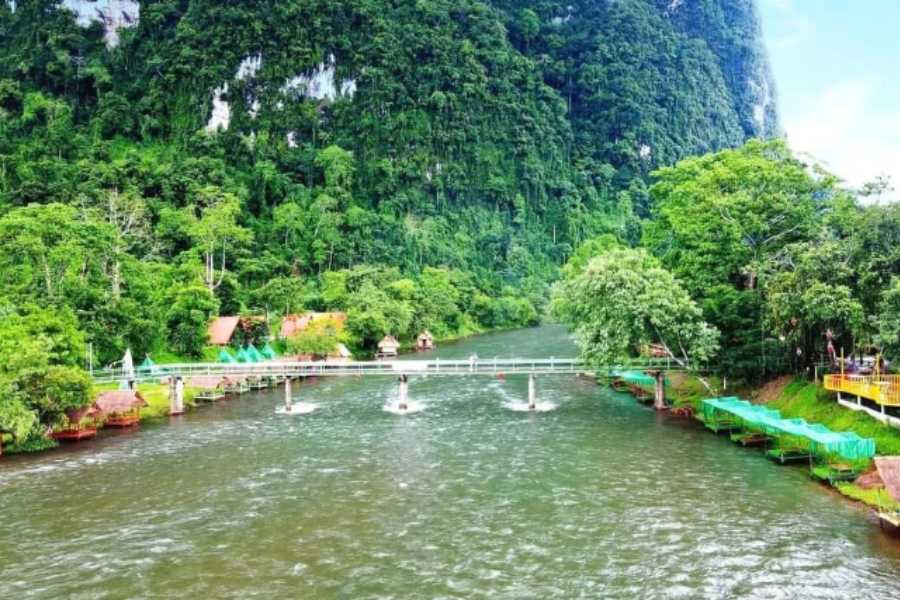
Final Thoughts: Is Nam Ngum Lake Worth the Journey?
A Peaceful Contrast to Laos’ More Touristy Spots
Nam Ngum Lake offers a serene and less crowded alternative to the popular tourist destinations in Laos. Visitors can enjoy the unspoiled natural beauty, calm waters, and authentic local culture away from the usual hustle and bustle, making it an ideal spot for relaxation and reflection. For more insights, check our Laos Travel Guide to plan your perfect itinerary.
Ideal for a Nature Retreat or Short Getaway from Vientiane
Just a few hours from Vientiane, Nam Ngum Lake is perfectly suited for a nature retreat or a quick escape from the city. Whether for a day trip or an overnight stay, guests can indulge in scenic boat cruises, local cuisine, and peaceful surroundings, all while immersing themselves in the tranquil lakeside lifestyle.
Also Read: Traveling to Laos in September: Travel Guides, Weather, and Best Places to See










